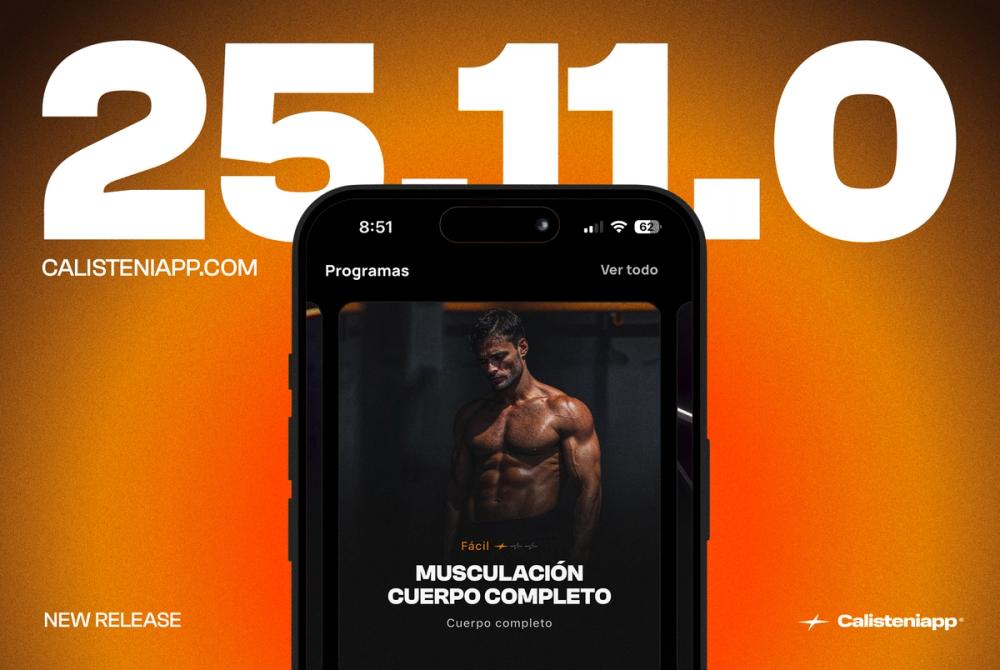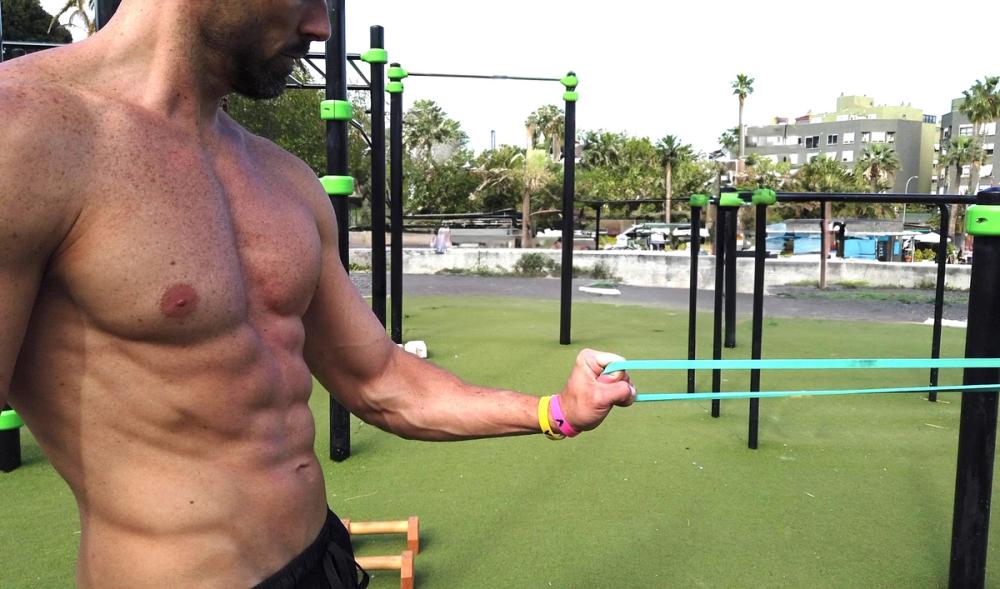
Release 25.11.0 - A new beginning
Calisteniapp is a symbol that represents our obsession with excellence, our essence, and the path we want to define for the next ten years.

There’s a fascinating phenomenon in calisthenics that most people are unaware of at first. However, if you’ve been training for a few months, you’re probably starting to notice it.
You see, as you train for a while, you’ll realize that some exercises come more naturally to you than others. For instance, you might find push-ups and dips easier, but pull-ups are much more challenging.
Similarly, when you start training advanced moves, you might find that the early progressions of the front lever feel manageable, while the planche progressions seem impossible. Or you might excel at a move like the human flag but struggle significantly with a press to handstand.
These differences all stem from the same root cause: one way to classify calisthenics exercises is based on movement patterns—specifically push or pull patterns. It’s common for individuals to naturally excel at one of these patterns, and this preference can significantly influence their progress and performance in calisthenics.
In this article, we’ll explore why this is so important, what causes it, the advantages and disadvantages of excelling in one pattern over the other, how to adjust your training accordingly, and much more.

First, let’s define what we mean by push and pull patterns and which muscles are involved in each—focusing solely on the upper body.
A push pattern involves moving a free weight away from your torso, like in a bench press or military press. However, in calisthenics, since we work with fixed elements such as the floor, bars, or parallettes, a push pattern refers to movements where you push your body away from these fixed elements. Examples include push-ups, dips on parallel bars, and handstand push-ups.
The primary muscles engaged in push patterns are the pectorals, anterior deltoids, and triceps, with some involvement of the upper trapezius in vertical push movements.
A pull pattern involves bringing free weights toward your torso, as in rows or bicep curls. In calisthenics, pull patterns refer to exercises where you pull your body toward a fixed element, such as pull-ups or Australian rows.
The primary muscles used in pull patterns are the lats, biceps, posterior deltoids, middle and lower trapezius, with occasional engagement of the lumbar region and spinal erectors.

In calisthenics, static holds and advanced tricks can also be classified by whether the movement relies more on a push or pull pattern. To determine this, consider whether the force applied moves your torso toward or away from the fixed element.
For example:
However, some cases are less obvious. For instance:
Other examples of push tricks include handstands and their variations, the V-sit, and the impossible dip. Pull tricks include moves like the Hefesto, one-arm pull-ups, and the Victorian.

Understanding these movement patterns is essential because the foundation of calisthenics lies in basic exercises like pull-ups, dips, push-ups, handstands, and muscle-ups, along with their many variations and progressions. For athletes focusing on tricks or competitive calisthenics, the most significant elements are the planche and the front lever, again with their variations and progressions.
Thus, if someone excels at pushing movements, they’ll likely progress faster in exercises like dips, push-ups, handstands, and planche. Conversely, those who favor pulling movements will do better in pull-ups, muscle-ups, and front lever progressions.
This preference isn’t usually subtle. In many cases, it’s strikingly evident. In competitions, it’s common to see athletes excelling in planche but struggling with front lever, or vice versa. Even in endurance events, the bias toward pushing or pulling is often apparent.

Personally, I’ve always excelled at pushing. This has allowed me to achieve advanced planche variations, handstand presses, and weighted dip progressions with relative ease. On the other hand, I’ve always struggled with pulling. My front lever is limited to a few seconds with questionable form, and progress in pull-ups and muscle-ups has been slower and more grueling. Even in weighted calisthenics, I’ve found that I progress steadily in weighted dips and handstand push-ups but struggle with weighted pull-ups and muscle-ups.
You’re probably wondering: why does this happen? Why is the divide between push and pull preferences so pronounced?
The answer isn’t entirely clear. The most plausible explanation lies in individual morphology—specifically, the proportions of different body segments, which affect the efficiency of mechanical levers.
Factors like the length of your arms relative to your torso, the ratio of your torso to your legs, and the location of your center of gravity likely play a significant role. For example:
Additionally, muscle morphology and the proportion of fast-twitch versus slow-twitch muscle fibers in key muscles may influence your natural strengths. Early-life experiences, such as frequently doing push-ups but rarely pull-ups, could also play a role.

What should you do with this information? Start by identifying your natural inclination—whether you excel at pushing, pulling, or are equally balanced—and decide what you want to focus on.
Personally, I’ve chosen to focus on my strength in pushing while still dedicating time to pulling exercises, acknowledging the slower progress in that area. I’ve never pursued front lever mastery at the expense of my pushing skills, as I feel that would be an inefficient use of my time and energy.
Use this insight to evaluate your strengths, set realistic goals, and choose the most effective training approach. Whether you aim to maximize your strengths, achieve balance, or find a middle ground, this understanding will help you make informed decisions about your training.
If you’re ready to take your training to the next level, consider using the EVO training programs and routines from Calisteniapp. For example, we offer an EVO push routine, a front lever program, and three planche training programs. Check them out and start making progress today!
I hope this article helps you on your journey.
By Yerai Alonso

Yerai Alonso
Cofundador de Calisteniapp, referente en calistenia y el street workout en Español. Con más de una década de experiencia, es creador de uno de los canales de YouTube más influyentes del sector. Autor del libro La calle es tu gimnasio, campeón de Canarias y jurado en competiciones nacionales e internacionales.
Join our newsletter
Learn everything you need to know about calisthenics

Calisteniapp is a symbol that represents our obsession with excellence, our essence, and the path we want to define for the next ten years.

Descubre los mejores ejercicios de antebrazo para calistenia. Mejora fuerza, agarre y control corporal con entrenamientos efectivos sin pesas.

Discover the 20 most effective ab exercises to train and strengthen your core through calisthenics.
